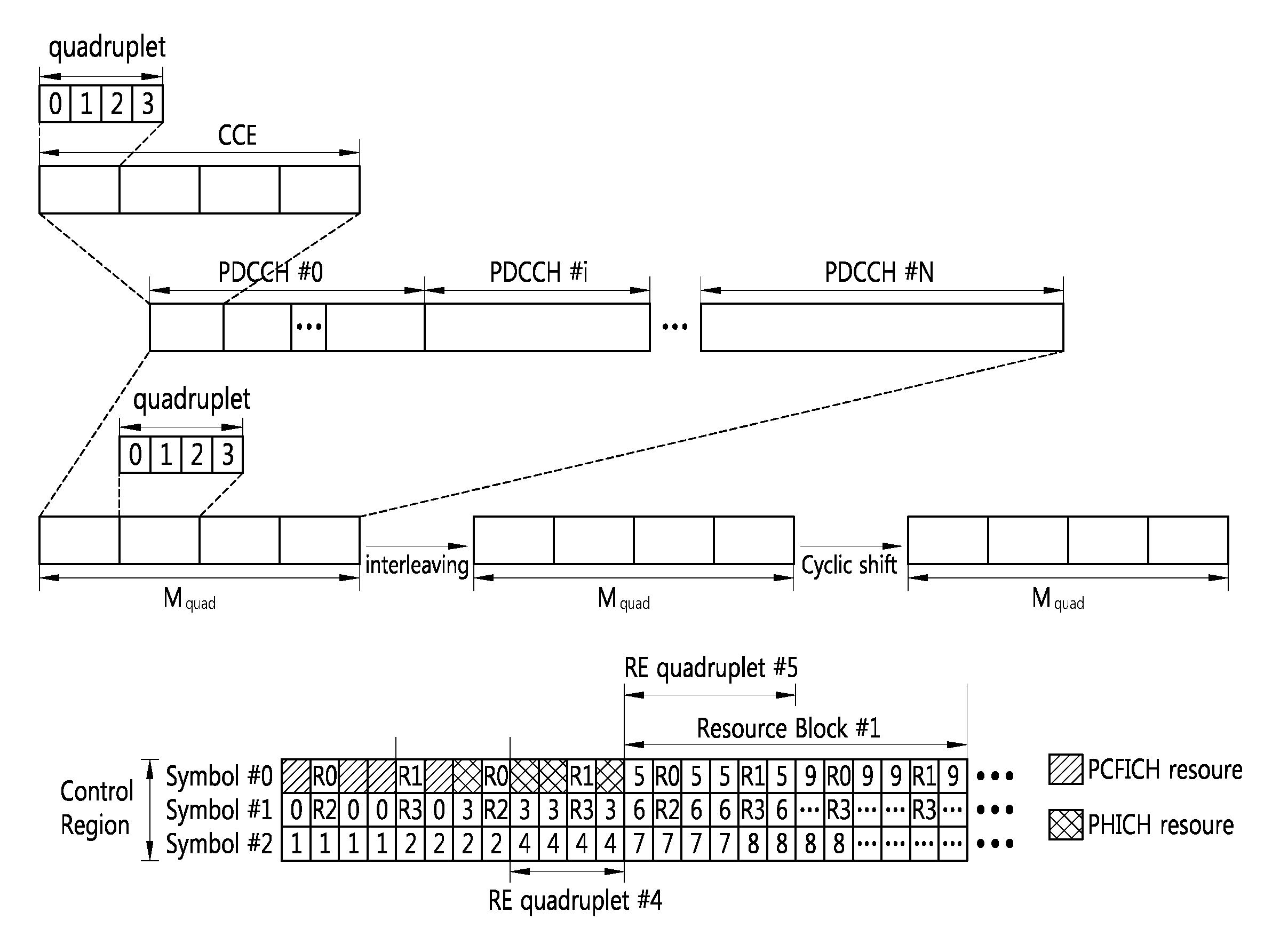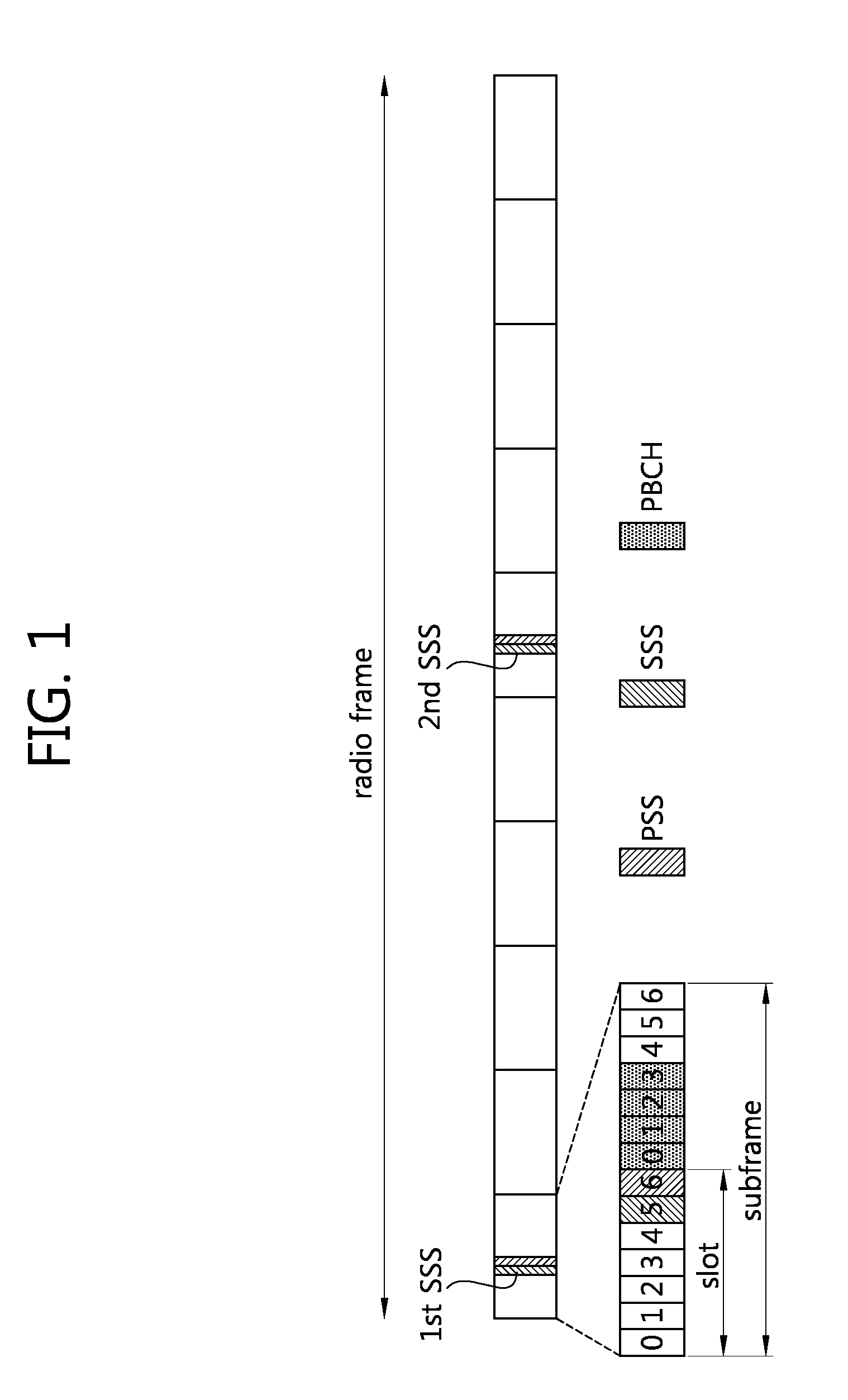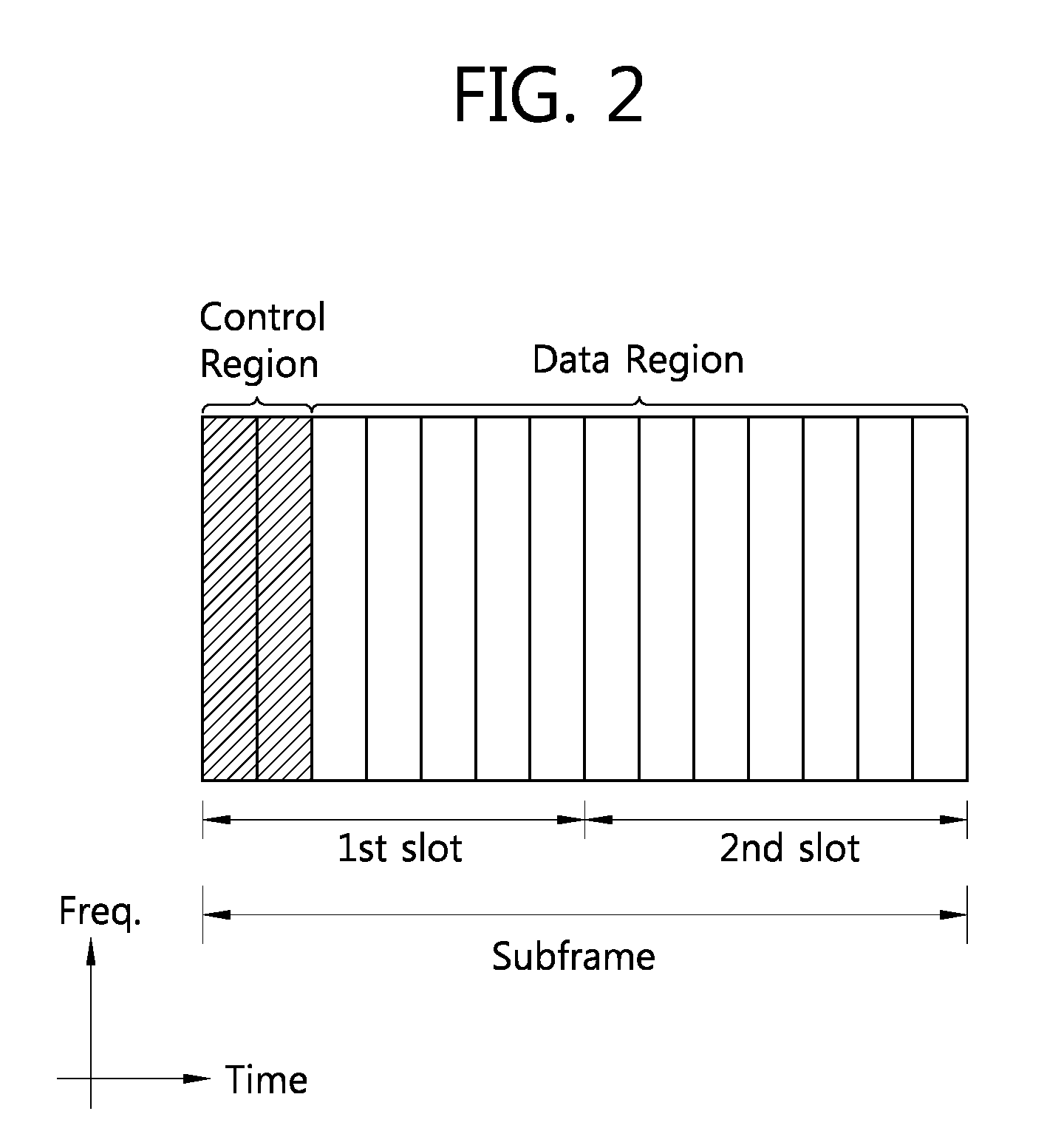Device and method for monitoring control channel in multicarrier system
a multi-carrier system and control channel technology, applied in the field of wireless communication, to achieve the effect of reducing the probability of control channel blockag
- Summary
- Abstract
- Description
- Claims
- Application Information
AI Technical Summary
Benefits of technology
Problems solved by technology
Method used
Image
Examples
first embodiment
[0136]In a first embodiment, based on the number of CCs allocated for each UE, a start point Yk,i of a i-th UE-specific search space can be defined. If the number of CCs allocated to a UE is N, by using i (i=0, 1, . . . , N-1), a start point Yk,i of the i-th UE-specific search space can be defined as follows.
Yk,i={(A·(Yk-1+i)} mod D or
Yk,i={A·Yk-1+i} mod D [Equation 3]
[0137]Here, i=0, 1, . . . , N-1; ns is a slot number within a radio frame; k=floor(ns / 2); Yk-1 is a value given from UE ID (e.g., C-RNTI); and A and D parameters can use the values of equation. 2.
[0138]round(x) is a function that rounds off to the nearest integer. ceil(x) is a function that returns the minimum value from integers larger than or equal to x. floor(x) is a function that returns the maximum value from integers smaller than or equal to x.
[0139]Calculating a start point as shown in equation 3 may cause a problem such that UEs with similar UE IEs are made to have the same start point. For example, a first UE...
second embodiment
[0140]In a second embodiment, a start point Yk,j of a j-th UE-specific search space can be defined based on CC index or CIF of a CC allocated for each UE. The start point can be defined as follows.
Yk,j={(A·(Yk-1+j)} mod D or
Yk,j=(A·Yk-1+j)mod D [Equation 4]
[0141]Here, j denotes at least one of CC index (or CIF) of each DL CC within a UE DL CC set, CC index (or CIF) of all the CCs within a UE DL / UL CC set, and the total number of DL CCs and UL CCs that can be scheduled on a PDCCH monitoring CC. In this case, too, by setting Yk-1=UE ID*Y, a probability that UE-specific search spaces overlap among UEs can be reduced.
third embodiment
[0142]In a third embodiment, based on the number Xq of scheduled CCs that can be scheduled on a PDCCH monitoring CC, a start point Yk,c of a c-th UE-specific search space can be defined. The start point can be defined as follows.
Yk,c={(A·(Yk-1+c)} mod D or
Yk,c=(A·Yk-1+c)mod D [Equation 5]
[0143]Here, c is CC index of a CC scheduled on a PDCCH monitoring CC, where c=0, 1, . . . , Xq-1. Xq is the number of scheduled CC that can be scheduled on a PDCCH monitoring CC. In this case, too, by setting Yk-1=UE ID*Y, a probability that UE-specific search spaces overlap among UEs can be reduced.
[0144]In the same way, based on CC index cd (cd=0, 1, . . . , Xdq-1) of a scheduled DL CC or CC index cu (cu=0, 1, . . . , Xuq-1) of a scheduled UL CC, a start point of a UE-specific search space for a cd-th or a cu-th CC can be defined.
PUM
 Login to View More
Login to View More Abstract
Description
Claims
Application Information
 Login to View More
Login to View More - R&D
- Intellectual Property
- Life Sciences
- Materials
- Tech Scout
- Unparalleled Data Quality
- Higher Quality Content
- 60% Fewer Hallucinations
Browse by: Latest US Patents, China's latest patents, Technical Efficacy Thesaurus, Application Domain, Technology Topic, Popular Technical Reports.
© 2025 PatSnap. All rights reserved.Legal|Privacy policy|Modern Slavery Act Transparency Statement|Sitemap|About US| Contact US: help@patsnap.com



